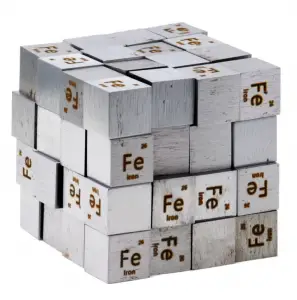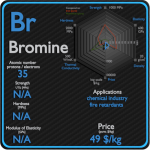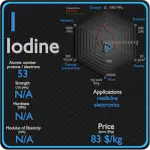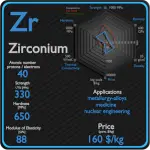This article contains comparison of key thermal and atomic properties of chlorine and iron, two comparable chemical elements from the periodic table. It also contains basic descriptions and applications of both elements. Chlorine vs Iron.

Chlorine and Iron – About Elements


Source: www.luciteria.com
Chlorine and Iron – Applications
Chlorine
Chlorine is used in the manufacture of a wide range of consumer products, about two-thirds of them organic chemicals such as polyvinyl chloride (PVC), many intermediates for the production of plastics, and other end products which do not contain the element. As a common disinfectant, elemental chlorine and chlorine-generating compounds are used more directly in swimming pools to keep them sanitary. While perhaps best known for its role in providing clean drinking water, chlorine chemistry also helps provide energy-efficient building materials, electronics, fiber optics, solar energy cells, 93 percent of life-saving pharmaceuticals, 86 percent of crop protection compounds, medical plastics, and much more.
Iron
Iron is used in numerous sectors such as electronics, manufacturing, automotive, and construction and building. Iron is the most widely used of all the metals, accounting for over 90% of worldwide metal produc0tion. Its low cost and high strength often make it the material of choice material to withstand stress or transmit forces, such as the construction of machinery and machine tools, rails, automobiles, ship hulls, concrete reinforcing bars, and the load-carrying framework of buildings. Since pure iron is quite soft, it is most commonly combined with alloying elements to make steel. Steels are iron–carbon alloys that may contain appreciable concentrations of other alloying elements. Adding a small amount of non-metallic carbon to iron trades its great ductility for the greater strength. Due to its very-high strength, but still substantial toughness, and its ability to be greatly altered by heat treatment, steel is one of the most useful and common ferrous alloy in modern use. There are thousands of alloys that have different compositions and/or heat treatments. The mechanical properties are sensitive to the content of carbon, which is normally less than 1.0 wt%.
Chlorine and Iron – Comparison in Table
| Element | Chlorine | Iron |
| Density | 0.0032 g/cm3 | 7.874 g/cm3 |
| Ultimate Tensile Strength | N/A | 540 MPa |
| Yield Strength | N/A | 50 MPa |
| Young’s Modulus of Elasticity | N/A | 211 GPa |
| Mohs Scale | N/A | 4.5 |
| Brinell Hardness | N/A | 490 MPa |
| Vickers Hardness | N/A | 608 MPa |
| Melting Point | -101 °C | 1538 °C |
| Boiling Point | -34.6 °C | 2861 °C |
| Thermal Conductivity | 0.0089 W/mK | 80.2 W/mK |
| Thermal Expansion Coefficient | N/A | 11.8 µm/mK |
| Specific Heat | 0.48 J/g K | 0.44 J/g K |
| Heat of Fusion | 3.23 kJ/mol | 13.8 kJ/mol |
| Heat of Vaporization | 10.2 kJ/mol | 349.6 kJ/mol |
























